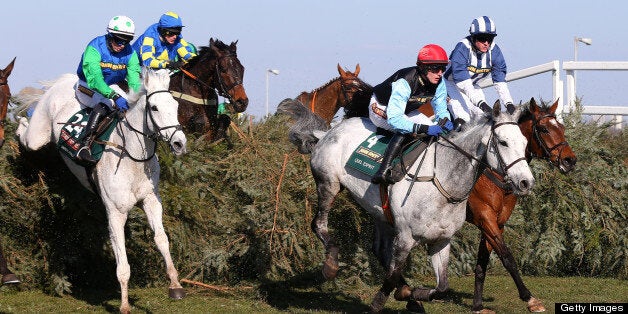
In the run-up to this year's Grand National meeting, we at World Society for the Protection of Animals (WSPA) wrote there was a statistical probability that horses would die at the event (see WSPA Chief Executive Mike Baker's Huffington Post blog of 6 April 2013).
This is because the risk of horses dying in steeplechases, such as those at Aintree, is around six per 1,000 horse starts; in hurdle racing, the other form of jump racing in the United Kingdom, is around four per 1,000 horse starts. In contrast, the risk of death in flat racing is approximately one fatality per 1,000 horse starts; hence flat racing (though not free of equine welfare issues) is significantly safer for horses.
To put these risks in an easy to understand context, if the risk of fatality you faced while driving your car was equivalent to that experienced by a steeple chasing horse you would be lucky to survive beyond six months' daily driving. If the risk was equivalent to that faced by a flat racehorse, you could expect to survive for around three years.
In the event, we were delighted to see the Grand National Steeplechase itself run without fatal injury this year, and this may reflect changes made to the course as a response to the two fatalities in each running of the race in 2011 and 2012.
Of course, we will need to observe future iterations of the race to distinguish real reduction of risk from statistical variation alone. The deaths of Battlefront and Little Josh in the first and second days of the three day Grand National meeting also remind us that the meeting did not pass off without fatal incident, and were predictable based on the statistical probabilities discussed above.
If we look at jump racing across the United Kingdom we find that 13 horses have died in jump racing meetings in the month of April since the Grand National meeting. These deaths occurred at Cheltenham, Exeter, Wincanton, Uttoxeter, Southwell, Newton Abbott, Huntingdon, Perth, Wetherby and Sedgefield; jump courses which may not have received the attention directed at Aintree in the run up to the Grand National, but which still clearly pose risk to horses.
Urgent work is needed beyond the famous Grand National turf at Aintree if the risks of jump racing are to be reduced to an acceptable level. This year's public interest in the Grand National should convey a very clear message to British jump racing. It is not only animal protection organisations such as the World Society for the Protection of Animals (WSPA) that are watching. The general public, better informed about animal welfare, is watching too.
